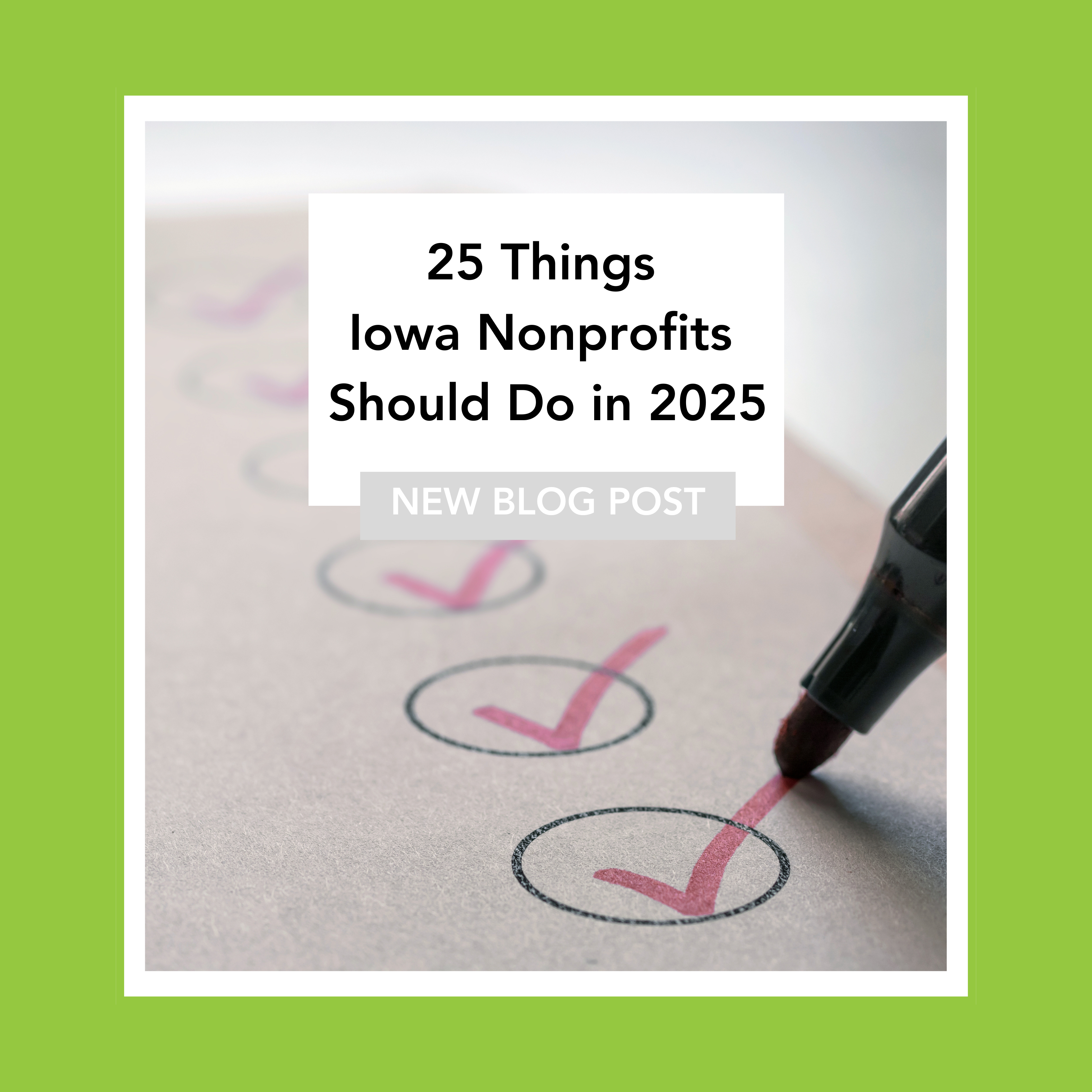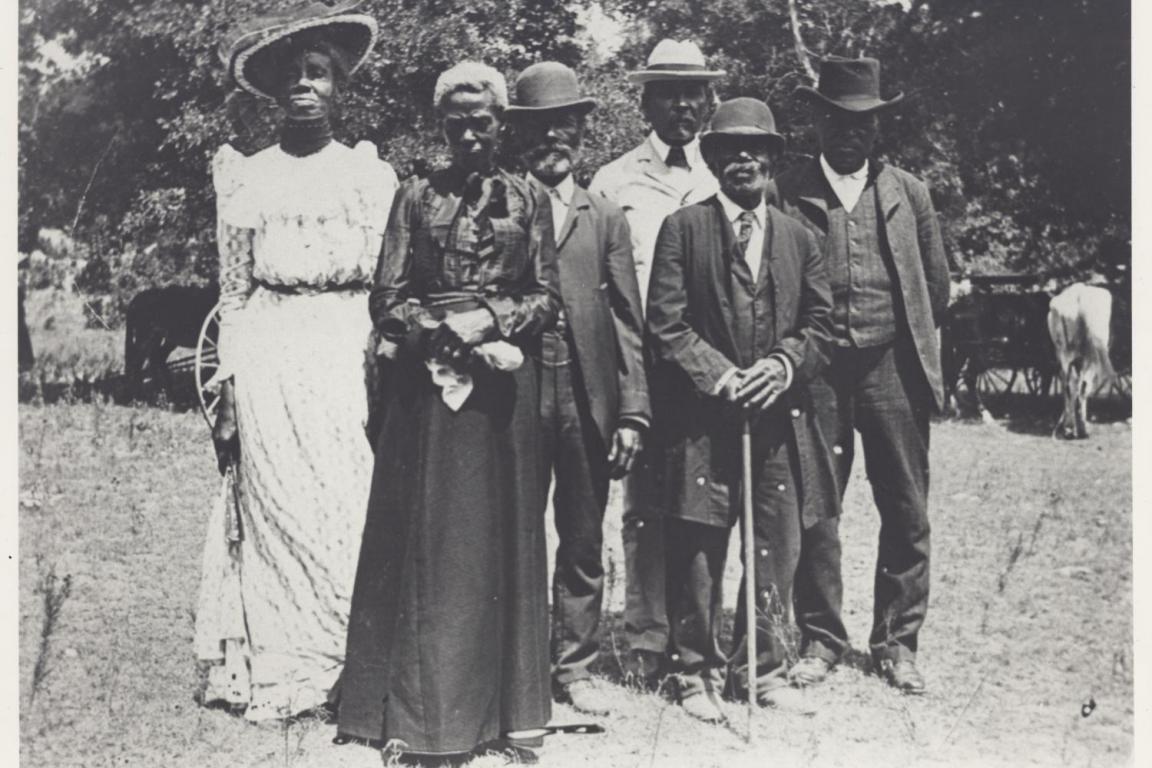March 4, 2025
I. INTRODUCTION
The date that is also a command: MARCH FOURTH! Your fave Iowa Nonprofit MUST Adopt these Ten (10) “must-have” polices.
II. IRS FORM 990
Every nonprofit, every year, must complete and file a version of Form 990, which the IRS calls its “Return of Organization Exempt From Income Tax.” The “long” version of Form 990 asks about many financial matters – donations, money on hand, non-cash assets, breakdown of expenses, and so on.
Form 990 goes even further, however, and asks nonprofits if they have certain policies in place. In fact, there are ten (10) specific policies that the IRS asks about on Form 990.
To be clear, the IRS does not mandate adopting these ten (10) policies. But the IRS, at least to me, is signaling what policies nonprofits should have in place. Again, my read of Form 990 is that the IRS is showing nonprofits what it considers to be “best practices.”
III. REASONS FOR THESE TEN (10) POLICIES AND THEIR BENEFITS
One might ask, if these policies are not absolutely required, why have them? These ten (10) policies provide substantial benefits, including but hardly limited to:
- Enhanced confidence of donors and other stakeholders
- Consistent framework for decision making
- Increased compliance with federal, state, and local laws
- Reduced risk to the nonprofit and its management and governing board
The existence of policies doesn’t mean compliance is always assured of course, but having policies in place provides a framework and sets expectations for a nonprofit’s Officers, Directors, donors, employees, volunteers, and other stakeholders. Such policies can be referenced if (when) issues arise.
Another major reason to invest in adopting these policies is because the IRS audits tax-exempt nonprofits, just as it audits companies and individuals. Having certain policies in place will only serve to benefit the nonprofit should it happen to be audited. Also, proper policies provide a foundation for soliciting, accepting, and facilitating charitable donations.
Last, but not least, Form 990 is made accessible to the public, meaning it can be used as a public relations tool if filled out diligently. Major donors can and often do review a nonprofit’s Form 990 to ensure the nonprofit is compliant, putting charitable donations to good use, and continuing to operate in alignment with its overall mission.
IV. WHAT POLICIES ARE WE TALKING ABOUT?
Let’s cover all ten (10) policies the IRS asks nonprofits to report on in its Form 990.
I’ll discuss each policy in alphabetical order.
1. COMPENSATION
Data related to compensation is reported in multiple sections on Form 990: Part I, Part VI, Part VII, Part IX, and Schedule J.
Competitive compensation is equally crucial for nonprofits as it is for for-profits. Not only does a Compensation Policy establish salary ranges, but it also outlines updated job descriptions, relevant salary administration, and performance management to establish equality and equity in the nonprofit’s compensation practices.
Additionally, a Compensation Policy should include a statement outlining the organization’s philosophy and strategy regarding compensation. This statement clarifies to both current and prospective employees, as well as Officers, Directors, donors, and other stakeholders, how the compensation structure aligns with and supports the nonprofit’s mission.
2. CONFLICT OF INTEREST
Found on Form 990 Part VI, Section B, Line 12 a-c.
A Conflict of Interest Policy serves two crucial purposes. Initially, it mandates that Officers and Directors disclose any conflicts or potential conflicts they may have. Subsequently, it prohibits individual Officers and Directors from participating in votes related to matters in which a conflict exists.
Form 990 inquires about the existence of a Conflict of Interest Policy and questions how the nonprofit determines and manages Officers and Directors who have an actual or perceived conflict of interest. This Policy is of considerable importance, as inadequately and unethically managed conflicts of interest can lead to sanctions against both the nonprofit and the individual(s) involved with the conflict(s).
3. DOCUMENT RETENTION AND DESTRUCTION
Found on Form 990 Part VI, Section B, Line 14.
The Document Retention and Destruction Policy (sometimes called “DRD Policy”) is like sanctioned spring cleaning. It clearly defines what is no longer needed and when.
A well drafted DRD Policy clarifies four (4) practices related to the handling of documents:
- What types should be retained;
- How they should be filed;
- For what duration; and
- Deletion and destruction techniques.
Such a Policy is very useful for ensuring important documents such as financial information, employment records, contracts, etc. are stored properly for the standard period of time as may be needed for tax, business, and other regulatory purposes. No doubt, a proper DRD Policy is incredibly important for both ease of operation and should litigation or governmental investigation arise.
4. FINANCIAL POLICIES AND PROCEDURES
While Form 990 doesn’t make a specific ask about a nonprofit’s financial policies, they are equally valuable. A Financial Policy guides a nonprofit in the organization, collection, and reporting of financial data.
Different than the Investment Policy (as discussed below), financial policies specifically address guidelines for making financial decisions, reporting the financial status of the nonprofit, managing funds, and developing financial goals. The financial management policies and procedures should also outline the budgeting process, investment reporting, what accounts may be maintained by the nonprofit, and when scheduled auditing will take place.
5. FORM 990 REVIEW
Found on Form 990 Part VI, Section B, Line 11.
Form 990 asks the following questions:
Has the organization provided a complete copy of this Form 990 to all members of its governing body before filing the form? Describe in Schedule O the process, if any, used by the organization to review this Form 990.
In posing these questions, the IRS is indicating that careful distribution and review of Form 990 prior to filing is highly advisable. This Policy proves highly beneficial in outlining the specific procedures for distribution and review by the governing body, such as the Board of Directors. It also acts as a reminder to nonprofit leaders that Form 990 is coming due!
6. FUNDRAISING
The topic of fundraising gets substantial attention on Form 990; fundraising income and expenses are asked about in Part I, Part IV, Part VIII, Part IX, and Schedules G and M.
Any nonprofit that conducts some type of charitable fundraising, which is most, needs a Fundraising Policy. This Policy should include provisions for compliance with local, state, and federal laws, as well as the ethical norms the nonprofit chooses to abide by in fundraising efforts. Remember that fundraising encompasses not only the solicitation of donations, but also the receipt of donations.
7. GIFT ACCEPTANCE
Gifts and contributions are referenced many times on Form 990: Part I, Part IV, Part V, Part VIII, Part IX, and Schedule M.
Don’t mistake the Gift Acceptance Policy with the Fundraising Policy. While related, they are completely separate, and both necessary. A well written Gift Acceptance Policy provides written direction on evaluating proposed non-cash donations. This Policy should also grant some much-needed guidance for kindly rejecting donations that can carry extraneous liabilities an obligations the nonprofit is not readily able to manage.
8. INVESTMENT
One way Officers and Directors may fulfill their fiduciary responsibilities to the nonprofit is through investing assets to further the nonprofit’s goals. As you can imagine, before investing, the nonprofit should have an Investment Policy in place to define who is accountable for the investment decisions. Additionally, this Policy should offer guidance on activities of growing/protecting the investments, earning interest, and maintaining access to cash if necessary.
A nonprofit’s Investment Policy should be written to give management personnel the authority to make investment decisions, as well as preserve the governing authority’s oversight ability. Beyond the specifics of investments, this Policy can also govern financial management decisions regarding situations like accepting charitable gifts of securities.
If a professional financial advisor or investment manager is hired to implement investments and offer advice, this person’s role can be accounted for in the Investment Policy as well. Form 990 does not ask if a nonprofit has a specific Investment Policy, but it does refer to investments in multiple places throughout the form, and the need for a defined policy is clear.
9. PUBLIC DISCLOSURE
Found on Form 990 Part VI, Section C, Lines 18-20.
Speaking broadly, nonprofits exist to serve the public in some way or another, and some nonprofit documents must be made available to the public upon request. Other documents can be kept entirely internal. This Policy should overview both what documents the nonprofit must disclose and also to what extent other non-required documents and information will be shared.
Form 990 specifically asks the filing nonprofit to report if certain documents are made available to the public, such as governing documents (like the bylaws), financial statements, and the Conflict of Interest Policy. Additionally, Form 990 asks for the name, address, and phone number of the individual(s) who possesses the financial “books” and records of the nonprofit.
10. WHISTLEBLOWER
Found on Form 990 Part VI, Section B, Line 13.
All organizations, including nonprofits, are prohibited from retaliating against employees who “blow the whistle” against employer practices. A Whistleblower Policy will help protect a nonprofit from state and federal law violation and will encourage timely investigation and solutions to complaints. Overall, the Policy should set a process for complaints to be addressed and include protection for the whistleblower(s).
A Whistleblower Policy also serves as encouragement for staff, volunteers, and other stakeholders to come forward with credible information on illegal practices or violations of the nonprofit’s policies. It does this by specifying that the nonprofit will protect the individual from retaliation, and identifies those Officers, Directors, employees, or outside parties to whom such information can be reported.
If your organization is interested in adopting (or revisiting!) these ten (10) must-have policies, please don’t hesitate to reach out to Gordon Fischer Law Firm.
For the month of March, I’m offering a special to Iowa nonprofits. I will draft, revise, and edit the ten (10) policies expressly referenced by the IRS on Form 990 specific to the unique mission of your nonprofit.
My email is:
gordon@gordonfischerlawfirm.com
####






















